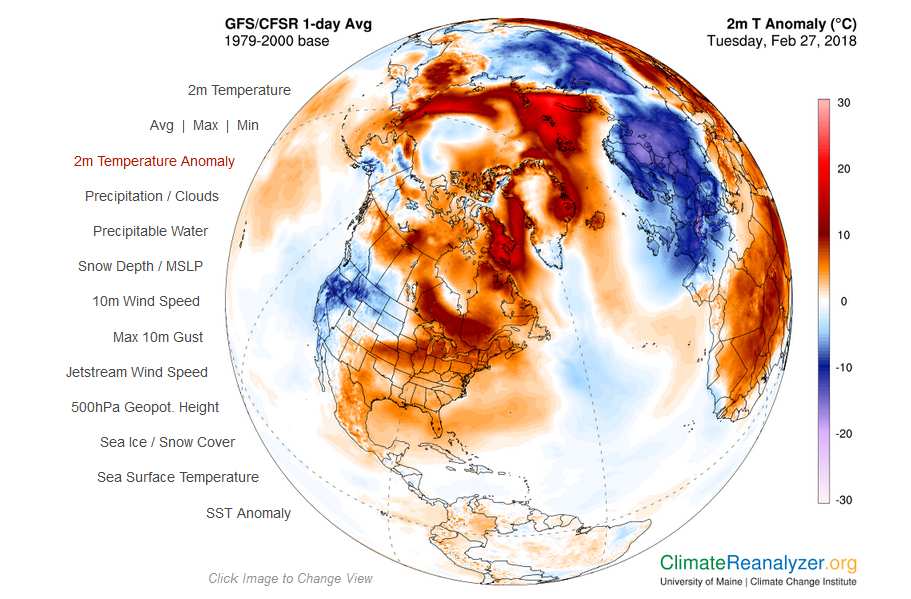During the Arctic winter, the sun won't rise at the North Pole from October to March. The normal temperature for the Arctic north is around -20 Celsius. But this year, the Arctic is experiencing a highly unusual heat wave. Temperatures over the entire Arctic north have averaged about six degrees above standard since the beginning of the year and at times have spiked more than 20 degrees higher. On Feb. 20, the temperature in Greenland not only climbed above freezing 0-degree Celsius experienced more than 24 hours of temperatures according to data from the Danish Meteorological Institute. And on Saturday (Feb. 24) the temperature on Greenland's northern tip reached 6°C. Which isn't normal because the Arctic currently being in winter and perpetual darkness. Usually, it is around -30°C.
As a result of these temperatures, the Bering Sea is now experiencing its lowest levels of sea ice ever recorded since satellite data began in 1979.
According to climate researcher Zack Labe, the temperature in an area closest to the North Pole is currently higher than at any other time during the month of February, dating back to 1958. Labe tweeted that the temperature spike seen in the region is extraordinary, well beyond unprecedented for this time of year.
“It’s never been this extreme,” said Ruth Mottram, a climate scientist at the Danish Meteorological Institute (DMI).
“How weird is that? Well, it’s Arctic winter. The sunset in October and won’t be seen again until March. Perpetual night, but still above freezing,” Robert Rohde, the lead scientist at Berkeley Earth, a non-profit at the University of California, tweeted.
Scientists say a long-term shrinking of sea ice on the Arctic Ocean, linked to global warming, exposes warmer water below that releases more heat into the atmosphere. That, in turn, may be a decline of winter sea ice in the Arctic. They were even shocked in recent days to discover open water north of Greenland, an area normally covered by old, very thick ice.
"This has me more worried than the warm temps in the Arctic right now," tweeted Mike MacFerrin, an ice sheet specialist at the University of Colorado.
“Wacky weather continues with scary strength and persistence,” tweeted Professor Lars Kaleschke, a professor at the University of Hamburg.
In December 2017, the National Oceanic and Atmospheric Administration (NOAA) published its Arctic Report Card and found that “the Arctic environmental system has reached a ‘new normal’, characterized by long-term losses in the extent and thickness of the sea ice cover”.
Scientists studying the Arctic climate have sounded the loudest alarms about how quickly humans are altering the environment. Does that mean nature signals us it as a warning? Well, if this temperature surge doesn’t alarm you, then nothing will.





























